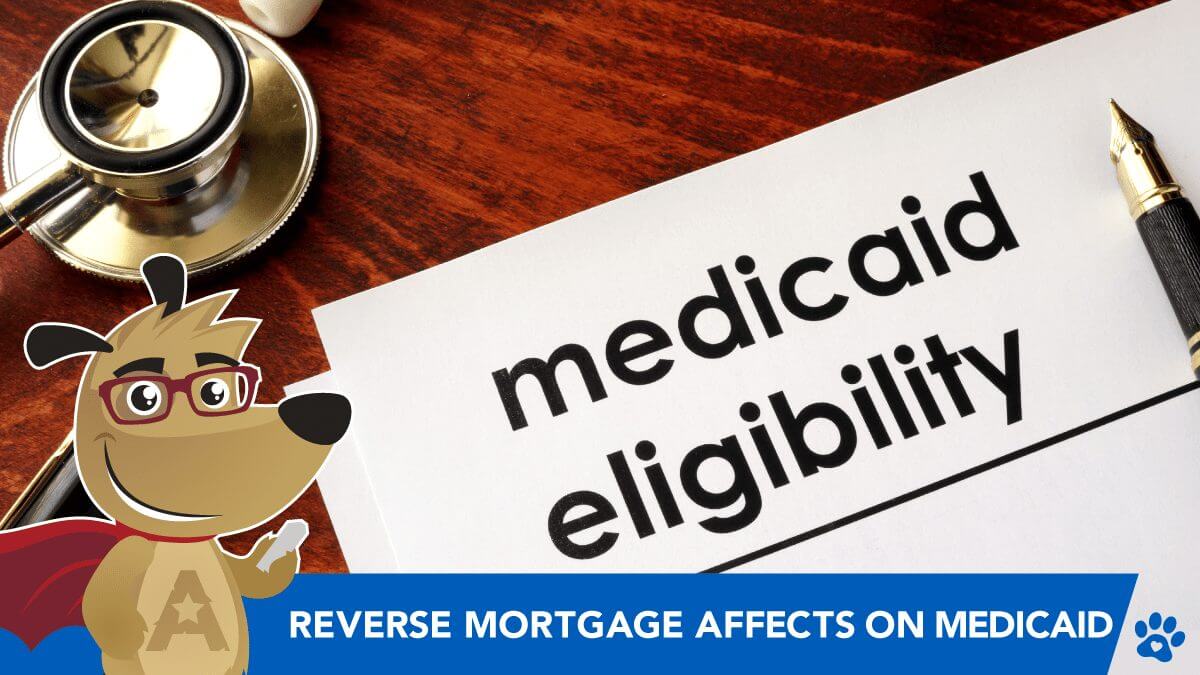Reverse Mortgages and Medicaid/SSI Benefits: Key Considerations for 2025
 |
Michael G. Branson, CEO of All Reverse Mortgage, Inc., and moderator of ARLO™, has 45 years of experience in the mortgage banking industry. He has devoted the past 20 years to reverse mortgages exclusively. (License: NMLS# 14040) |
 |
All Reverse Mortgage's editing process includes rigorous fact-checking led by industry experts to ensure all content is accurate and current. This article has been reviewed, edited, and fact-checked by Cliff Auerswald, President and co-creator of ARLO™. (License: NMLS# 14041) |
Reverse mortgage proceeds can provide valuable financial support, but they may also influence your eligibility for Medicaid or Supplemental Security Income (SSI). Understanding these potential effects is essential for making informed decisions.
If you’re 62 or older and considering a reverse mortgage to supplement your retirement income, it’s important to evaluate how this choice could impact your access to needs-based programs. Careful planning can help you make the most of this financial tool while preserving your benefits.

How Reverse Mortgages Affect Public Benefits and Needs-Based Programs
| Program | Impact of Reverse Mortgage | Notes |
|---|---|---|
| Social Security Retirement Benefits | No Impact | Reverse mortgage proceeds usually do not affect Social Security retirement benefits. |
| Medicare | No Impact | Medicare is not a means-tested program; reverse mortgage proceeds generally do not affect eligibility. |
| Medicaid | Potentially Impacted | Loan proceeds may count as assets if not spent within the same month, potentially affecting eligibility. |
| Supplemental Security Income (SSI) | Potentially Impacted | Reverse mortgage funds could be considered a countable resource, affecting SSI benefits. |
Understanding Means-Tested Benefits
Means-tested benefits are based on an individual’s income and assets. According to the NeighborWorks HECM Counseling Training Manual, reverse mortgage loan advances held in the borrower’s bank account may be counted as assets, potentially disrupting eligibility for these benefits. This manual, used nationwide by certified reverse mortgage counselors, helps inform borrowers about the loan and its potential implications.
Borrowers who choose the lump sum payment option face a high risk of losing eligibility for means-tested assistance, as they are more likely to retain the loan proceeds in their bank account. This retained money is viewed as an asset, which can affect eligibility for programs such as Medicaid and Supplemental Security Income (SSI).
Understanding how reverse mortgage proceeds impact means-tested benefits is essential for making informed financial decisions.
Medicaid Asset Limits
Medicaid considers both income and assets when determining eligibility. While limits vary by state, the federal minimum asset limit for an individual is $2,000, and $3,000 for a couple. However, some states have higher thresholds. For example, in 2025, New York’s asset limits are $31,175 for individuals and $42,312 for couples.
Receiving a lump sum from reverse mortgage proceeds can impact Medicaid eligibility. According to NeighborWorks, seniors who receive a lump sum from a reverse mortgage may lose their Medicaid eligibility unless that money is spent immediately. Medicaid recipients must also meticulously track all cash inflows and outflows in their bank accounts.
Supplemental Security Income (SSI) Limits
SSI is a federal program designed to support the elderly and disabled with limited income and resources. For 2025, the federal benefit rate (FBR) is $967 per month for individuals and $1,450 per month for couples.
To qualify, individuals must have countable assets not exceeding $2,000, and couples must have assets below $3,000.
It’s important to note that while reverse mortgage proceeds are generally not considered taxable income, unspent funds retained in your bank account can be counted as assets. Therefore, receiving a lump sum could potentially push your assets above the allowable limits, affecting your eligibility for SSI.
Key Considerations
- State Variations: Medicaid asset limits vary by state. For instance, while the federal minimum is $2,000 for individuals, some states have higher limits. It’s essential to research your state’s specific requirements.
- Immediate Spending: If you opt for a lump sum payment from a reverse mortgage, spending the funds promptly within the same month can help prevent them from being counted as assets in the following month.
- Consult Professionals: Before proceeding with a reverse mortgage, consult with a Medicaid planner or financial advisor to understand the implications fully and to receive personalized guidance.
By carefully managing how you receive and utilize reverse mortgage proceeds, you can make informed decisions that help maintain your eligibility for essential benefits like Medicaid and SSI.
Frequently Asked Questions About Needs-Based Assistance
How does a reverse mortgage affect Medicaid?
Can a reverse mortgage affect Social Security or Medicare?
No, Social Security and Medicare are not “needs-based” programs. Borrowed loan funds from a reverse mortgage will not affect your access to these programs.
What happens to a reverse mortgage when the owner enters a nursing home?
Does a reverse mortgage count as income?
Can I request a paper check from my reverse mortgage to avoid running proceeds through my bank account?

ARLO recommends these helpful resources:




 Michael G. Branson
Michael G. Branson Cliff Auerswald
Cliff Auerswald

October 29th, 2025
October 29th, 2025
August 24th, 2024
August 31st, 2024
May 20th, 2024
May 25th, 2024
May 13th, 2024
May 13th, 2024
November 19th, 2023
November 19th, 2023
October 26th, 2023
October 26th, 2023
August 15th, 2023
August 15th, 2023
March 15th, 2023
March 15th, 2023
January 12th, 2023
January 12th, 2023
December 13th, 2022
December 20th, 2022
August 19th, 2022
August 19th, 2022
August 16th, 2022
August 16th, 2022
May 9th, 2022
May 10th, 2022
March 9th, 2022
March 9th, 2022
March 8th, 2022
March 8th, 2022
July 25th, 2021
July 25th, 2021
March 12th, 2021
May 3rd, 2020
May 3rd, 2020
February 12th, 2020
February 12th, 2020
November 4th, 2019
November 4th, 2019
August 12th, 2019
August 12th, 2019
August 3rd, 2019
August 3rd, 2019
August 1st, 2019
August 12th, 2019
June 25th, 2019
June 25th, 2019
February 15th, 2018
February 15th, 2018
March 12th, 2017
March 13th, 2017
September 16th, 2016